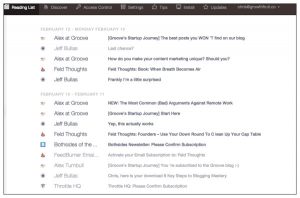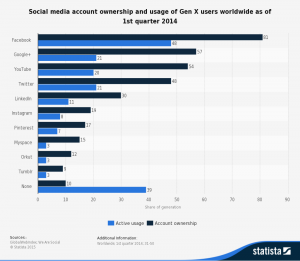It can be really time consuming, when you want to track how your business is performing across multiple departments or product lines, or other variables, when you don’t have that information at hand. You have to find it, maybe pull out a comparison of last year’s figures, and then wade through it all. That’s why I like a dashboard.
Just like the indicators on your car’s dashboard, they’re all in one place and you know at a glance, with a number or an image, how things are going.
My preference is a summary dashboard for the company – covering sales, margin, profit, new business, client margins and contributions for the top clients, expenses and how they are tracking against budget, and other summary measures. Then you can drill down by department into sales, operations, customer service, marketing and production (whatever is relevant to your business).
First, work out what you can measure
Activities – frequency – eg: tweets, blog posts, direct email campaigns, proposals, new business development meetings, number of leads via website
Outcomes – conversions, sales, new clients
Variance/Change – eg: actual vs budget; budget vs forecast; this year vs last year
You must have a system that captures the data you want to measure, because you don’t want to be measuring too much manually as you grow. It is time consuming, and has the potential for error.
Identify what is important to measure
What sort of focus & measures would best indicate performance (good or otherwise) in your business?
- Sales revenue
- Margin
- Number of new clients acquired
- Value per client
- Revenue per person in your business
- Profit per person
- Number of subscribers per month
- Average value of subscribers/clients
- Number of product sales
- Average value of product sales
- Revenue per distribution channel/affiliate/reseller/sales person
- Financial ratios – eg: percent of direct costs/overheads to sales
Feed results into dashboard
If you can’t do it yourself, have someone create a macro spreadsheet to automatically pull the necessary data into your dashboard. If this isn’t possible, have someone do it manually for you.
You may see your company’s results represented in the dashboard once a month, or if you have a smaller business, your bookkeeper may be able to give you key sales and financial information in a dashboard monthly. This would include comparisons to previous years and actual vs budget.
Other results, such as those related to your marketing, may be something you can track in a separate spreadsheet. For example, if you get measurement statistics from your email marketing system, you could record the key numbers each month and track those.
Analyse results
You need to know what you want more of next year, what needs addressing and what you want to change. Make sure you do an analysis of how you performed in all these areas:
- Sales revenue
- Margin
- Profitability
- Sales by Product/service lines
- Marketing performance and ROI – leads, conversion, subscribers
- Customer service if you have a customer service department to address and close support problems, for example
- Operations /Production – how efficient are you in generating output
- Actual against budget & the goals you set 12 months or 6 months ago
When you’ve done this, you’ll have a clear focus on what your priorities need to be for the following month and/or year.
Track and action
It’s all well and good to track these measures but the whole purpose of them is to let you know as soon as possible when you need to course-correct.
By measuring monthly you will see patterns that are good and patterns that flag potential problems. Better to course correct and address any performance issues mid-month than at the end of the year when it may be too late.
Managing by dashboard, once set up, makes managing, tracking, analyzing and auctioning much easier than if you had to wade through all sorts of separate pieces of information, reports and spreadsheets to compare the information you need.
Business & Finance Articles on Business 2 Community(53)








